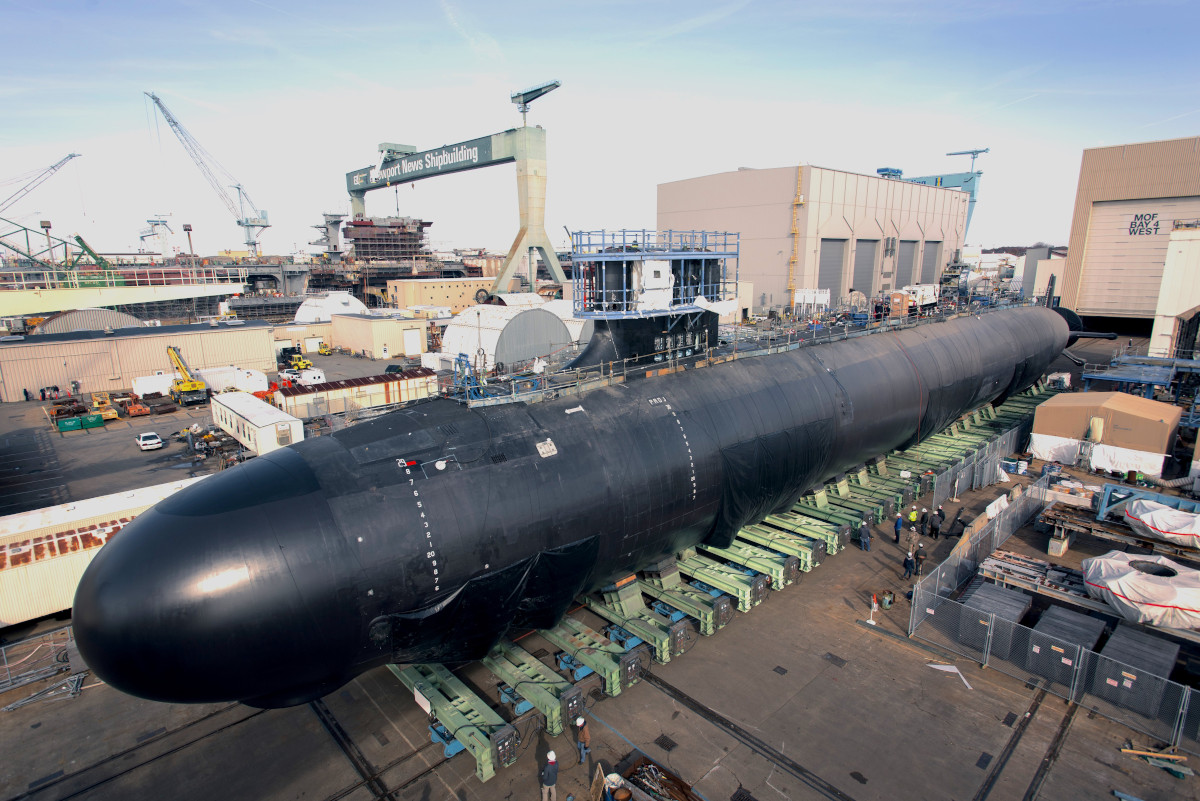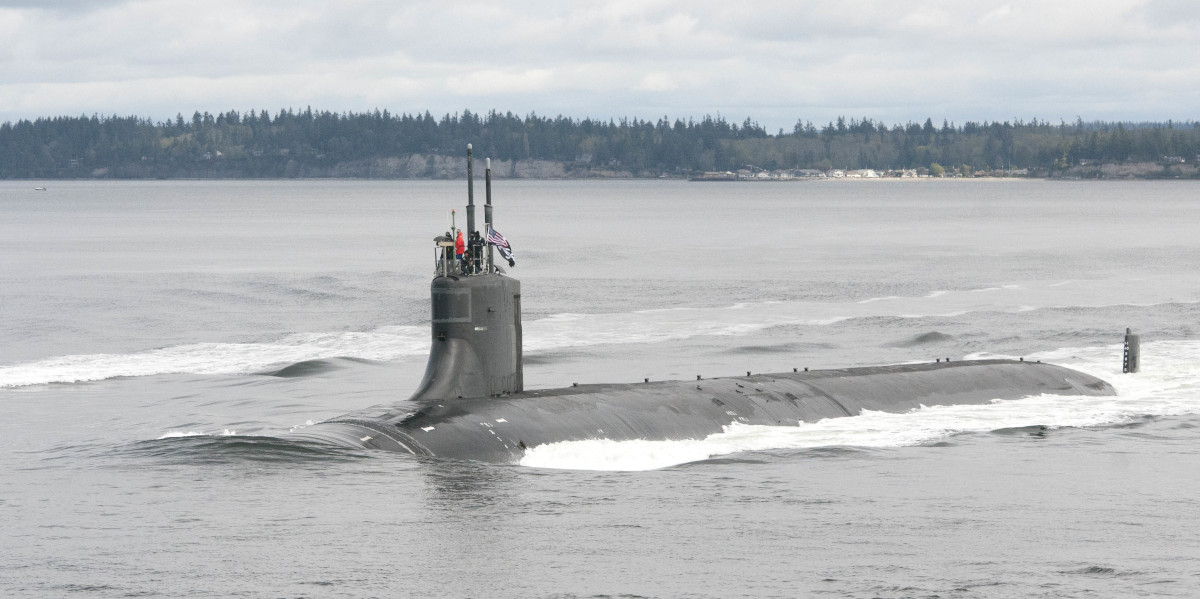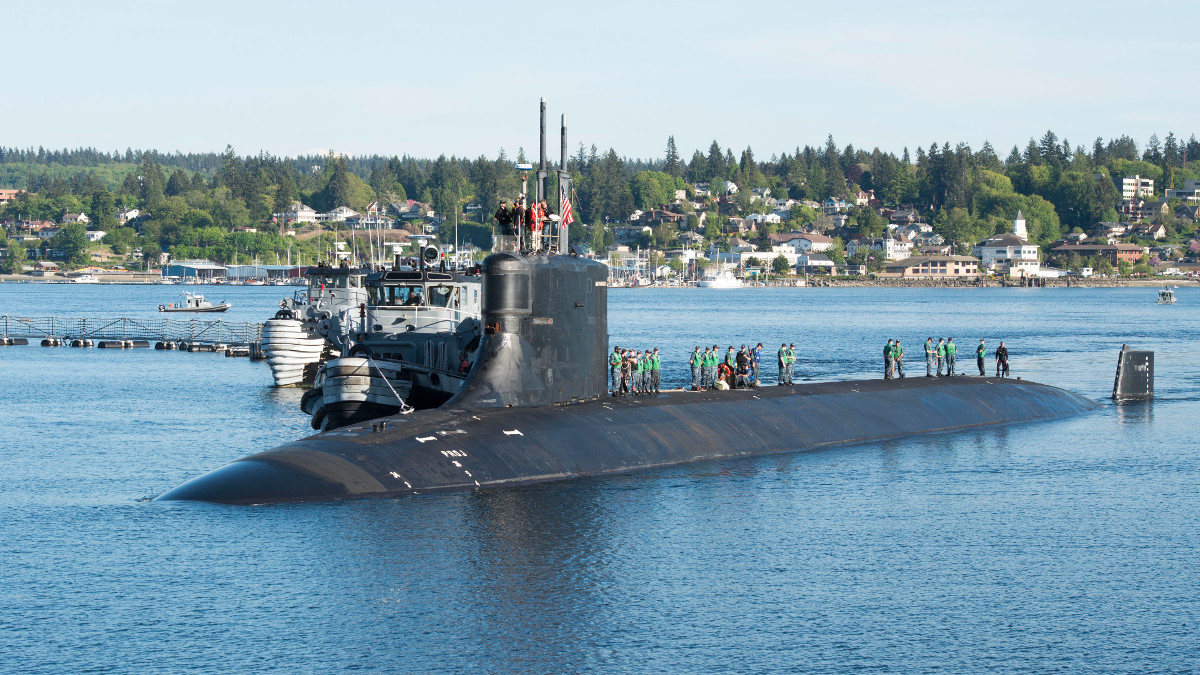The U.S. Navy’s future nuclear attack submarine, or SSN(X), is set to be notably wider than the service’s present Virginia class, bringing it more in line size-wise with its advanced Seawolf class. It will also leverage technology in development now for its future Columbia class ballistic missile submarines.
USNI News
reported on these latest details about the Navy’s next attack submarine following a third-quarter earnings call with Rex Geveden, CEO of BWX Technologies on Nov. 2, 2020. BWX Technologies is a major subcontractor to General Dynamics Electric Boat on the Columbia class and has also supported work on other submarine programs, including supplying the nuclear reactors that power the Navy’s Virginia, Seawolf, and Los Angeles classes.
“We do expect it will be a larger type of submarine, probably in the size class of the Columbia, but there’s not much more to tell than that. But we’re working with our Navy customer in what that would look like and how we could take that into production,” Rex Geveden said, according to USNI News. “It has the moniker SSN(X) until it gets a class name, and there’s some thought, discussion, and analysis. It would be the follow-on to the Virginia fast-attack submarine, and it would feather in sometime in the late 2030s.”

USNI News said that despite Geveden using the word “larger,” what he was referring to was the overall width of the submarine, rather than its length or displacement. This would make sense considering that the Columbia class boats are expected to have a submerged displacement of almost 23,310 tons. This is more than twice that of existing Virginia class boats, early block models of which displace around 7,800 tons, and even more than that of the unique, extended-length Seawolf class spy submarine USS Jimmy Carter, which has a displacement of just under 12,160 tons, according to the Navy.
That the SSN(X)’s width would be greater than that of the Virginia class would also be well in line with past Navy statements about this future design, dating back to the first public disclosure of its plans for these submarines in 2018, at which time the service described the notional design as Seawolf-like. The beam, or widest point, of those advanced attack submarines, which have seen been modified and reconfigured to be better equipped to carry out intelligence-gathering missions and other specialized activities, is approximately 40 feet, while that of the Virginia class is just 34 feet. Previous reports have indicated that the Columbias will have a beam of 43 feet.


A wider design could allow for the insertion of additional sound-dampening features between the inner hull, where the submarine’s systems are and where its crew works, and the outer hull. Reducing the acoustic signature of any submarine is important for making it harder for opponents to detect and track, which, in turn, makes it more survivable.
Of course, the size of the inner hull could also be increased, which would provide added space for various kinds of equipment and weapons, This coulda also make it easier to integrate future technologies and capabilities, such as the ability to deploy and recover unmanned underwater vehicles.
It’s worth noting that the Seawolfs, as originally designed, were dedicated hunter-killers meant to engage hostile ships and submarines and have eight torpedo tubes, along with the ability to carry up to 50 Mk 48 heavyweight torpedoes or torpedo tube-launched Tomahawk land-attack cruise missiles. By comparison, the existing blocks of the more multi-mission focused Virginias have just four torpedo tubes and have a standard loadout of 37 torpedoes, though they do also have Vertical Launch System cells to fire Tomahawks.
A 2018 report from the Congressional Budget Office (CBO) said that the Navy was, at that time, targeting an SSN(X) design that would be able to carry up 62 torpedoes or other torpedo tube-launched weapons, including anti-ship missiles, such as the UGM-84 Harpoon, a well as future anti-ship cruise missile weapons, and would not necessarily have a vertical launch capability at all.

“Specifically, the Navy indicates that the next-generation attack submarine should be faster, stealthier, and able to carry more torpedoes than the Virginia class – similar to the Seawolf class submarine,” CBO’s report said of the projected design as a whole. “CBO therefore assumed that the SSN(X) would be a Seawolf-sized SSN, which displaces about 9,100 tons when submerged, and would have an all-new design in keeping with the Navy’s description of it as a ‘fast, lethal, next-generation attack submarine.’”
It also makes good sense that the companies working with the Navy now on SSN(X), such as BWX Technologies, would be looking to leverage any features from the Columbia class design that could offer improved performance and increased stealthiness for the SSN(X). This all raises the distinct possibility that the Navy’s future attack submarine could have a shortened derivative of the Columbia hullform at its core, but one optimized for the hunter-killer mission rather than nuclear deterrence patrols.
That being said, attack and ballistic missile submarines have very different mission sets with very different general performance requirements. The former needs speed and maneuverability to hunt, while the latter is expected to cruise at lower speeds for extended periods of time while endeavoring to stay undetected at all costs. As such, the SSN(X) could easily have a markedly different configuration even if shares a significant portion of its hull and subsystems design with the Columbia class.
In addition, there have been discussions about developing a Large Payload Submarine, also derived from the Columbia, as something of a successor to the four Ohio class submarines converted into guided missile boats, which also have significant additional multi-mission capabilities that you can read about in more detail in this past War Zone feature. Any significant additional commonality between the Large Payload Submarine and SSN(X) might also raise the possibility of potentially merging the two designs.
No matter what, the SSN(X) design, and the requirements driving it, are likely to evolve, at least to some degree, in the future. The Navy is still very early in the process of crafting this submarine, requesting a very small $1 million for the project in the research and development portion of its most recent budget request for the 2021 Fiscal Year.
There also remain very real questions about how the Navy plans to budget for the design and construction of a new class of advanced and potentially very expensive attack submarines together with its other priorities. The service had run into similar issues with the Seawolfs and, together with general defense spending drawdowns following the end of the Cold War, ended up only buying three of those submarines. The first-in-class USS Seawolf and its sister USS Connecticut both cost $6 billion in the end, while the Jimmy Carter, which, as already mentioned, is a unique subclass unto itself, was even more expensive.

They remain the costliest attack submarines ever built anywhere in the world. However, their advanced capabilities, including their especially good performance while operating under thick ice, such as in the Arctic region, mean they are in very high demand within the Navy.
All of this also comes as the Navy is now pushing a proposal to expand the size of its overall fleet to 500 ships and submarines, up from less than 300 now, by 2045, another questionably ambitious plan that you can read about more in these past War Zone pieces.
Still, the Navy is clearly very committed to its new attack submarine plans, at least at present, which it feels are critical to countering expanding and increasingly active Russian and Chinese submarine fleets, as well as other naval developments in both of those countries. China has been on a naval construction blitz in the past few years, including the stunningly rapid construction of large capital ships, including aircraft carriers, amphibious assault ships, and destroyers, as well as various submarines.
“The advantage we have in the undersea is an advantage that we need to not only maintain, but we need to expand. I want to own the undersea for forever because I know that I can be really lethal from the undersea,” Chief of Naval Operations Admiral Mike Gilday said in October, according to USNI News. “When you think attack boat, you’re thinking, that can move around the timing and tempo of an operational commander’s need to deliver ordinance on target in a timely fashion. And so it’s got to be a fast sub as well.”
As it stands now, the Navy’s next class of attack submarine is set to be even larger and far more advanced than the Navy’s prized Seawolf class, which remains among the most capable submarines in the world.
Contact the author: joe@thedrive.com
